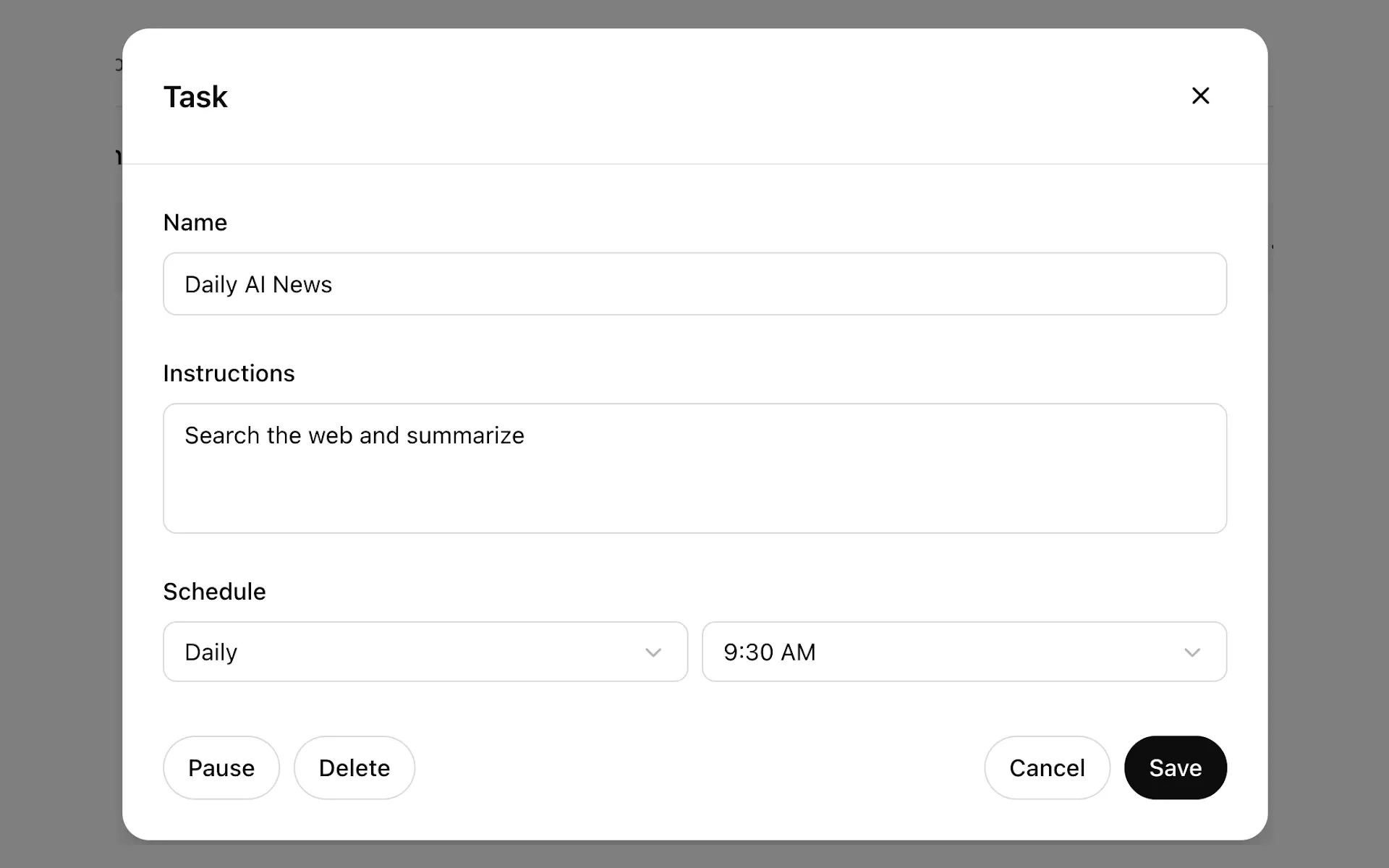ChatGPT Tasks launches beta for automated task scheduling
OpenAI releases ChatGPT Tasks in beta, enabling automated scheduling of prompts for Plus, Pro and Team plan users.

ChatGPT's new Tasks feature has gained significant attention from users exploring its automation capabilities this month. According to the official documentation, the feature enables ChatGPT to execute predefined prompts automatically, regardless of whether users are online.
The beta release, currently available for Plus, Pro, and Team plan subscribers, allows users to create up to 10 active tasks simultaneously. According to Andrew Wilkinson, co-founder of Tiny, the feature demonstrates practical applications beyond simple alerts. Wilkinson reports using the system to receive automated summaries of local entertainment events and monitor restaurant openings in his area.
The technical implementation utilizes GPT-4o, operating within existing plan usage limits. The feature functions across multiple platforms, including ChatGPT Web, iOS, Android, and MacOS applications. Windows support is scheduled for deployment later in Q1 2025, according to the product documentation.
Task creation follows a straightforward process through the profile interface. Users can select from suggested templates or create custom schedules. The system supports both one-time and recurring tasks, delivering results through push notifications or email based on user preferences.
Several limitations exist in the current beta phase. The documentation indicates that voice chats, file uploads, and GPTs remain unsupported. Users must manage their task quota within the 10-task limit, requiring the deletion or completion of existing tasks before adding new ones.
Early adopters have reported various use cases. Dmitry Sutton describes implementing automated news briefings, though noting occasional delays in information currency. Topher Stephenson, focusing on commercial real estate, reports using the system to track local business expansion signals and property transactions.
The implementation includes specific technical requirements for notifications. Browser permissions must be explicitly granted for desktop notifications, while mobile devices require separate authorization processes for push notifications. Users can manage these settings through the ChatGPT Web interface's notification controls.
Task management functionality includes editing capabilities. Users can modify task names, instructions, and schedules through the Tasks page interface. The system also provides options to pause or delete tasks through a three-dot menu interface.
The scheduling mechanism allows for precise timing control. Tasks execute at specified intervals, with completion notifications delivered across all authorized platforms where users access ChatGPT. This cross-platform synchronization ensures consistent notification delivery across devices.
Security considerations include platform-specific permission requirements. Desktop implementations require explicit browser notification permissions, while mobile platforms handle authorization through their native permission systems.
Performance monitoring capabilities exist through the task management interface. Users can track task execution status and modify parameters as needed. The system maintains task histories and allows for schedule adjustments without requiring task recreation.
The feature marks a significant technical advancement in ChatGPT's capabilities, enabling automated interaction patterns previously requiring manual initiation. As the beta progresses, user feedback continues to shape the implementation's development and refinement.

